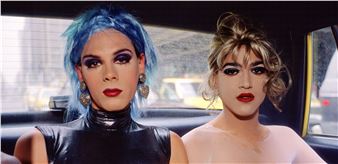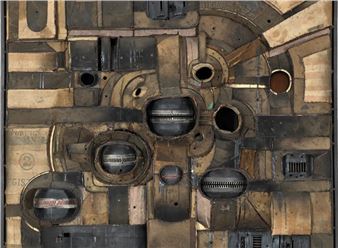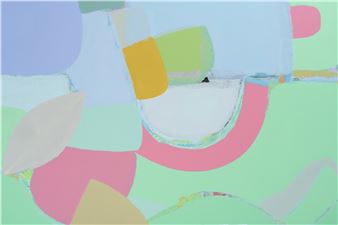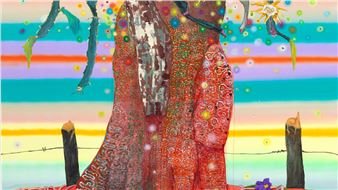Alair Gomes and Robert Mapplethorpe
The exhibition Alair Gomes and Robert Mapplethorpe at Fortes DÔÇÖAloia & Gabriel presents an unprecedented juxtaposition between the work of Alair Gomes and Robert Mapplethorpe. This is MapplethorpeÔÇÖs third exhibition at the Galeria and the first in which the work of the celebrated American photographer is seen side by side with a Brazilian artist.
The starting point of this dialogue is the desire ÔÇô expressed by both artists through texts and interviews ÔÇô to evidence in their works the experience of the transcendence of sex. The exhibition explores this relationship through the artistsÔÇÖ gaze, which seek the perfection of classical sculpture in the human body; in the notion of theatricality that is present in Mapplethorpe in opposition to the naturalness of the body in Gomes; and finally on the beach as an idealized place of pleasure as portrayed by both artists. In this way, the works are interspersed forming thematic groups, without chronological order. Although the photographs presented are from a similar period, from the late 1970s to the early 1980s, the juxtaposition is also able to highlight some fundamental differences in the production of both artists. For example, it is curious to note that while Mapplethorpe names his characters, not only showing their faces, which endows them celebrity status, Gomes opts for total anonymity.
Along the largest wall of the gallery, a heterogeneous group of MapplethorpeÔÇÖs images shows the beach as a place of hedonism and pleasure. The human body seems to integrate itself to the landscape in poses that imitate bas-reliefs, photographed in the sunlight. Other lesser-known photos reveal the artistÔÇÖs gaze upon the unadorned landscape. These images are interspersed by Alair GomesÔÇÖ Sonatinas, Four Feet (1970-1980), photographed with a telephoto lens from the window of his apartment in Ipanema (Rio de Janeiro). Although allowing a greater range, the use of this type of lens reduces the sharpness of the images, so that the Sonatinas privilege the geometric composition of the bodies in relation to the sand texture and the exercise apparatuses. The artistÔÇÖs distant gaze seeks a rigid geometric structure in the spontaneous action, while at the same time making explicit the unspoken codes of masculinity, interaction, and intimacy between two men in public.
At the back of the gallery, MapplethorpeÔÇÖs studio photos depict parts of the human body in precise, carefully posed and lit details to highlight the bodyÔÇÖs sculptural qualities ÔÇô volume, weight, and surface are all in evidence. The body of bodybuilder Lisa Lyon converses with the male nudes of this sequence, denoting the artistÔÇÖs concern with issues of gender representation. GomesÔÇÖs Beach Triptychs (c. 1980) are displayed alongside these images, which, despite their spontaneous nature, capturing the unposed moment, express the same concern with the classical representation of a body-sculpture.
A third group links MapplethorpeÔÇÖs S&M images (such as Leather Crotch and Frank Diaz, both from 1980) with others where male roles and race issues are evidenced through clothing. Hooded Man (1980), for instance, shows a black man totally naked wearing only a hood. This group of images is displayed side by side with Sonatinas, Four Feet No. 32, perhaps the most explicitly homoerotic in the series.
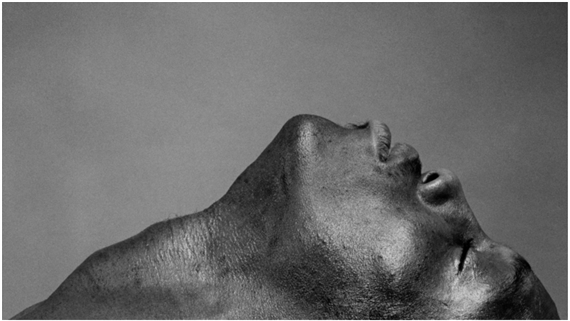
Recommended for you
The exhibition Alair Gomes and Robert Mapplethorpe at Fortes DÔÇÖAloia & Gabriel presents an unprecedented juxtaposition between the work of Alair Gomes and Robert Mapplethorpe. This is MapplethorpeÔÇÖs third exhibition at the Galeria and the first in which the work of the celebrated American photographer is seen side by side with a Brazilian artist.
The starting point of this dialogue is the desire ÔÇô expressed by both artists through texts and interviews ÔÇô to evidence in their works the experience of the transcendence of sex. The exhibition explores this relationship through the artistsÔÇÖ gaze, which seek the perfection of classical sculpture in the human body; in the notion of theatricality that is present in Mapplethorpe in opposition to the naturalness of the body in Gomes; and finally on the beach as an idealized place of pleasure as portrayed by both artists. In this way, the works are interspersed forming thematic groups, without chronological order. Although the photographs presented are from a similar period, from the late 1970s to the early 1980s, the juxtaposition is also able to highlight some fundamental differences in the production of both artists. For example, it is curious to note that while Mapplethorpe names his characters, not only showing their faces, which endows them celebrity status, Gomes opts for total anonymity.
Along the largest wall of the gallery, a heterogeneous group of MapplethorpeÔÇÖs images shows the beach as a place of hedonism and pleasure. The human body seems to integrate itself to the landscape in poses that imitate bas-reliefs, photographed in the sunlight. Other lesser-known photos reveal the artistÔÇÖs gaze upon the unadorned landscape. These images are interspersed by Alair GomesÔÇÖ Sonatinas, Four Feet (1970-1980), photographed with a telephoto lens from the window of his apartment in Ipanema (Rio de Janeiro). Although allowing a greater range, the use of this type of lens reduces the sharpness of the images, so that the Sonatinas privilege the geometric composition of the bodies in relation to the sand texture and the exercise apparatuses. The artistÔÇÖs distant gaze seeks a rigid geometric structure in the spontaneous action, while at the same time making explicit the unspoken codes of masculinity, interaction, and intimacy between two men in public.
At the back of the gallery, MapplethorpeÔÇÖs studio photos depict parts of the human body in precise, carefully posed and lit details to highlight the bodyÔÇÖs sculptural qualities ÔÇô volume, weight, and surface are all in evidence. The body of bodybuilder Lisa Lyon converses with the male nudes of this sequence, denoting the artistÔÇÖs concern with issues of gender representation. GomesÔÇÖs Beach Triptychs (c. 1980) are displayed alongside these images, which, despite their spontaneous nature, capturing the unposed moment, express the same concern with the classical representation of a body-sculpture.
A third group links MapplethorpeÔÇÖs S&M images (such as Leather Crotch and Frank Diaz, both from 1980) with others where male roles and race issues are evidenced through clothing. Hooded Man (1980), for instance, shows a black man totally naked wearing only a hood. This group of images is displayed side by side with Sonatinas, Four Feet No. 32, perhaps the most explicitly homoerotic in the series.
Artists on show
Contact details


 ARTISTS
ARTISTS








